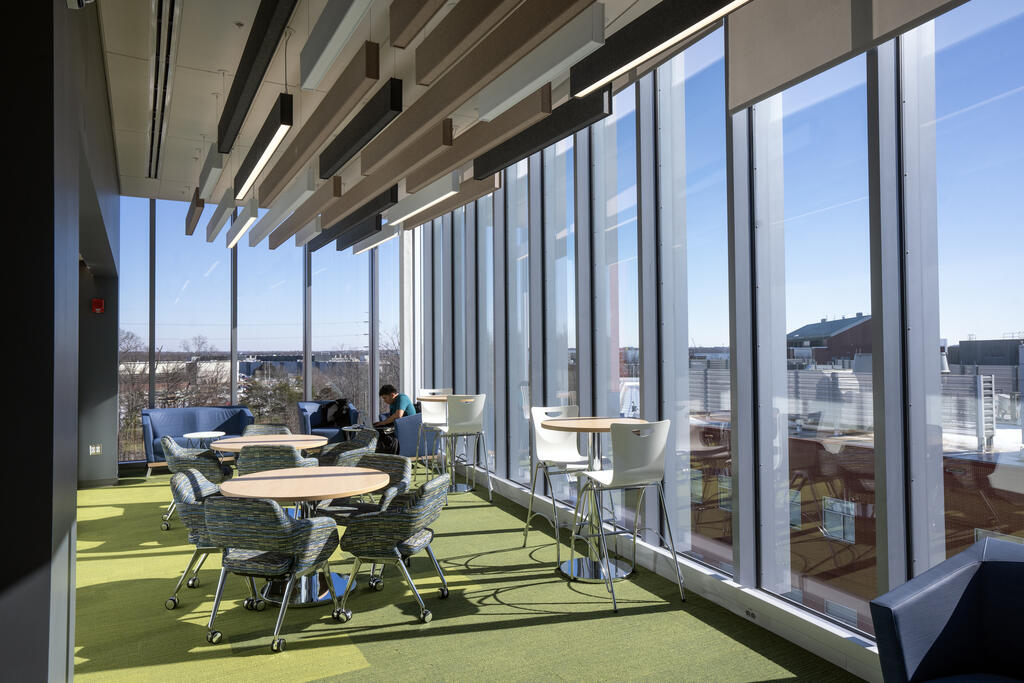Admission CTAs
Mason Science ASSIP and Aspiring Inventors Programs cultivate future STEM workforce
Impactful science research, education, and outreach opportunities can change a person’s professional trajectory. When and how often one experiences them can be key to the rapid rise. One stellar example of early and meaningful scientific mentorship at Mason is our Aspiring Scientist Summer Internship Program (ASSIP). For more than a decade, high school and early undergraduate students could pursue original, cutting-edge research in this highly regarded, immersive, science-based research and innovation experience.
Mason ASSIP began as a small group of students across the physical sciences. Now this in-demand program has expanded, supporting an unprecedented 272 total participants with more than 70 mentors. ASSIP 2023 applicants hailed from 33 states, and the District of Columbia, with students reporting home addresses from six countries, including the US. Selected students were paired with research mentors across all science disciplines as well as from other Mason disciplines and campuses, including the College of Engineering and Computing, College of Visual and Performing Arts, the School of Public Health, and Costello College of Business.
In addition to the summer long research project and poster presentation, some students also participated in Mason’s Aspiring Inventor’s Fellowship Club. This program ties to Mason’s and the college’s priority to help students cultivate an innovation mindset. Program participants expand their creative thinking skills and learn and experience the processes to develop and patent their bold scientific ideas.
The programs, orchestrated by Mason scientists, Lance Liotta, Marissa Howard, and Amanda Haymond Still, have a competitive application process and are always seeking partners who understand the value of providing such impactful learning opportunities.
“As I reviewed the displays of work that these young minds accomplished over 8 to 10 weeks this past summer, I was thoroughly impressed,” said Mason Science Dean Fernando Miralles-Wilhelm. “The future looks very bright for STEM,” he enthused.
Why encourage STEM research? Because success in the STEM workforce is lucrative and growing. At 2%, prior to the pandemic, unemployment was lower among the STEM workforce than the 4% rate non-STEM-based labor pool. And now in a post-COVID pandemic world, areas like medicine and health, space, the environment and climate, and quantum and materials sciences just to name a few will change the types of opportunities for the next generation. And the world’s demand for workers in STEM fields will continue to rapidly expand. According to the National Science Foundation, (NSF), from 2011 to 2021, the STEM workforce grew by 5.9 million to 34.9 million (a 20% increase) and the percentage of STEM workers in the total workforce rose 3% to 24%.
Gone are the days when parents just suggested their children pursue degrees as a lawyer or doctor because they knew the impact and economic compensation was substantial (yes, they still are). Now high schoolers also aspire (and family members encourage them) to be scientists, engineers, or even more specifically physicists, epidemiologists, forensics and data scientists as well. And through activities like ASSIP, today’s parents can witness the excitement as their students explore the next wave of professional opportunities.
“I’ve met with parents now encouraging their children to cultivate their intellect and impact in such fields as neuroscience, biochemistry, environmental science and policy, mathematical modeling and data science, and space exploration,” Miralles-Wilhelm explained.
Career opportunities are evolving so our science curriculums and outreach activities have to evolve with them to prepare the future workforce to not just fill the huge need, but also to drive the change and innovation our society will need to thrive.
Mason prides itself on providing access to transformative, impactful learning experiences. “ASSIP participants have forged relationships with mentors, not just working with their paired scientists for the summer, but really potentially life-long relationships,” said Amanda Haymond Still. “Many of the ASSIP scientists will become part of the growing and influential Mason network. As they go through life, strengthening connections with scientific peers and collaborators will become invaluable,” she added.
